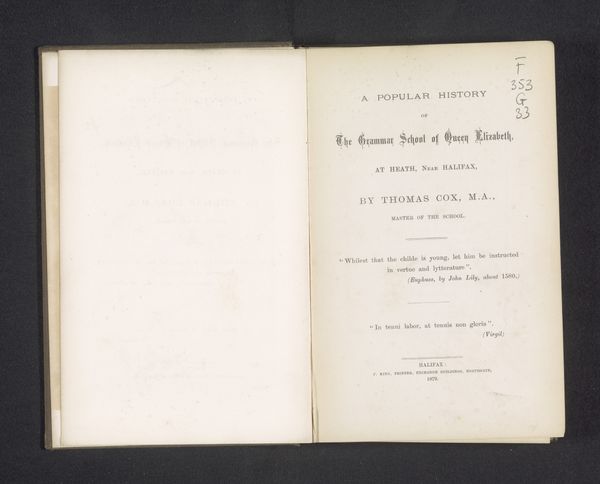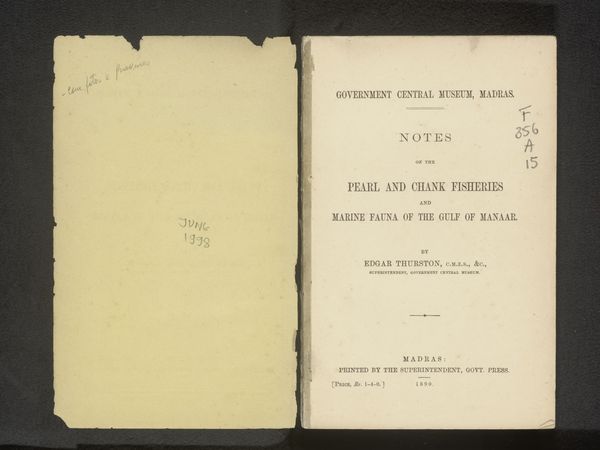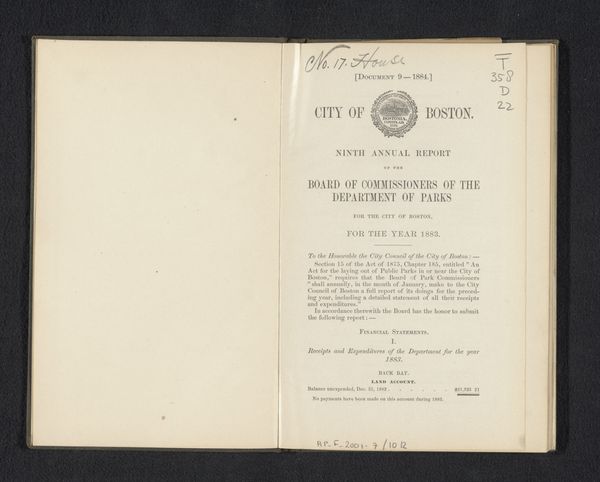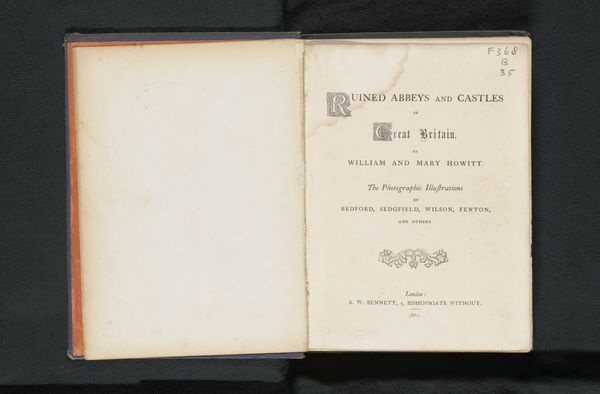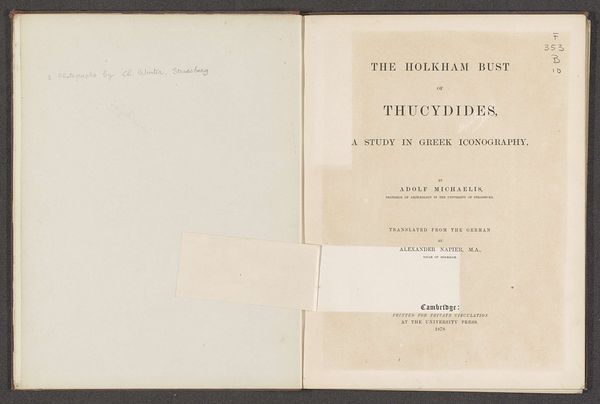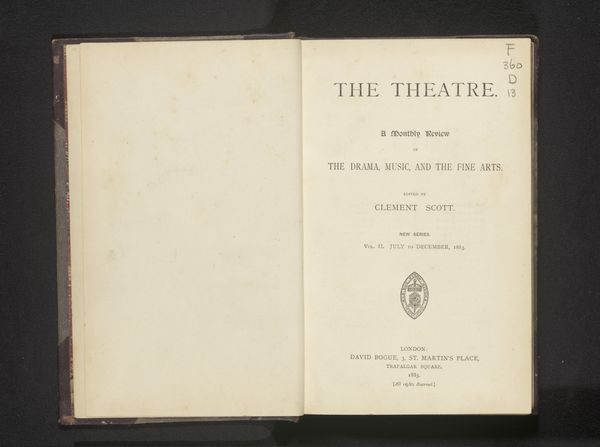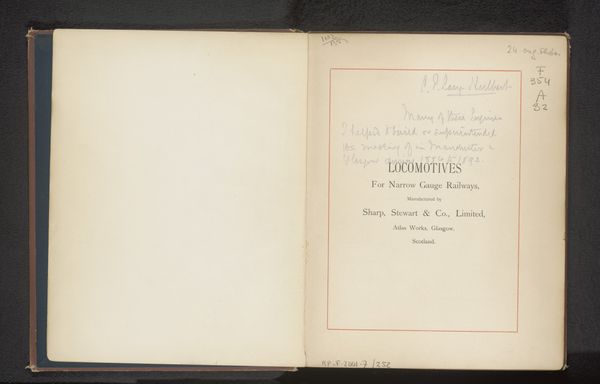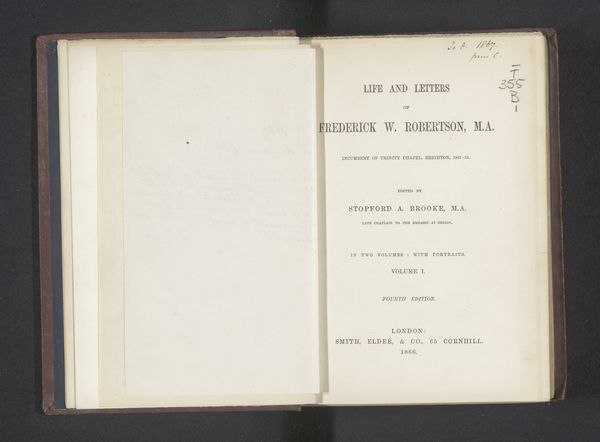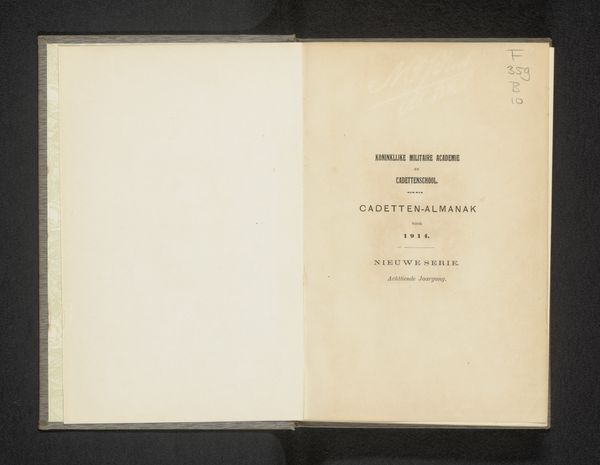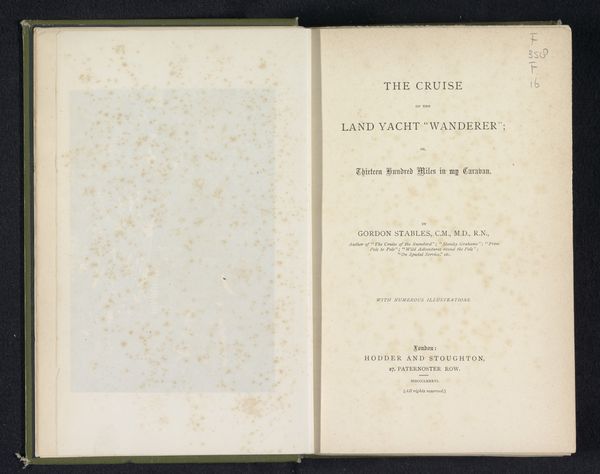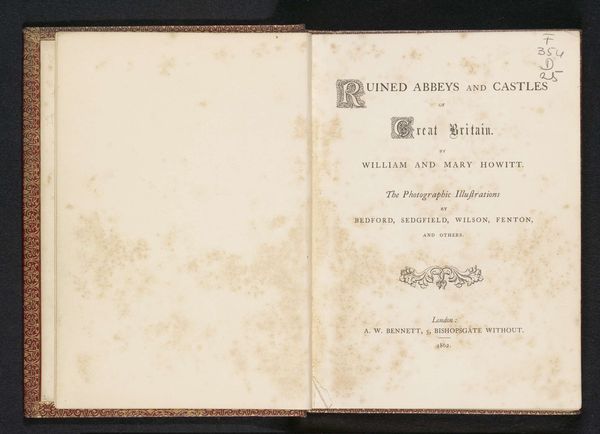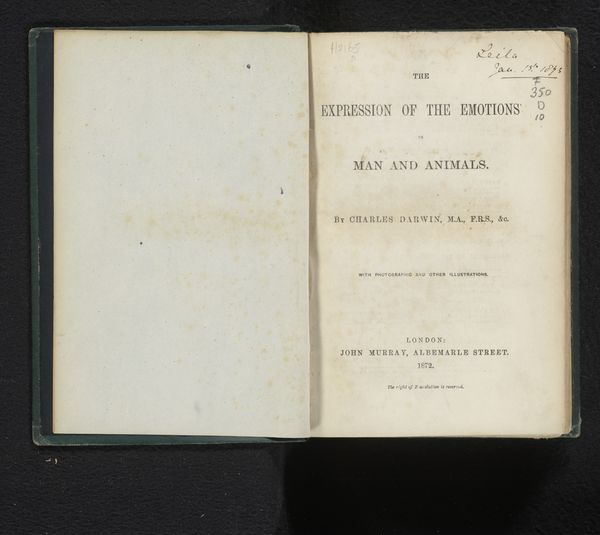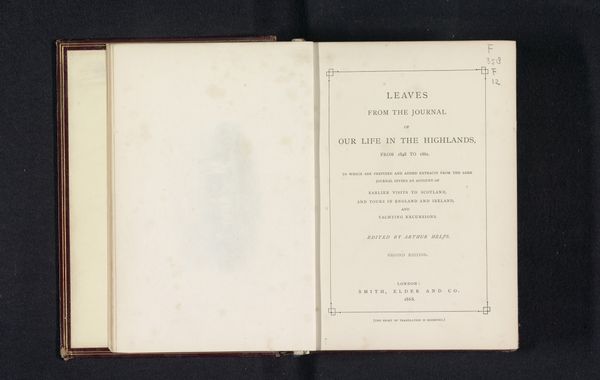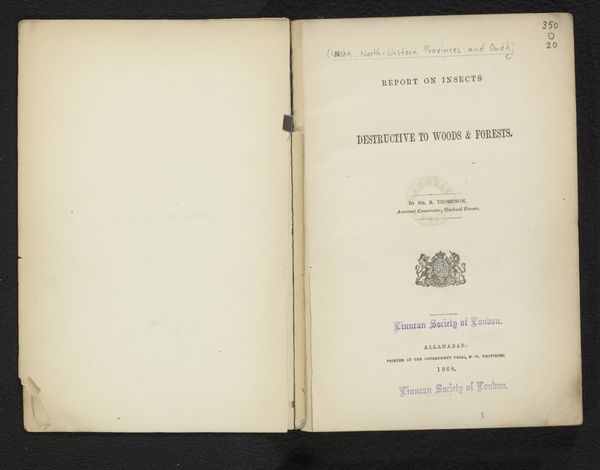
print, paper, photography
# print
#
book
#
landscape
#
paper
#
photography
Dimensions: height 189 mm, width 143 mm, thickness 10 mm
Copyright: Rijks Museum: Open Domain
Editor: Here we have a photograph of an open book titled, “The Wye: its ruined abbeys and castles,” printed in 1863. It’s credited to William and Mary Howitt with photographic illustrations by Bedford and Sedgfield. The texture of the paper seems really important here. What do you see when you look at it? Curator: I see the confluence of several important Victorian preoccupations. Think about the means of production here. We have photography, relatively new at the time, being harnessed to reproduce images for mass consumption within a book – a product of industrial printing. Note also the implicit social hierarchy; the book itself hints at leisure, at the ‘picturesque tour’, a very specific form of consumption available to a limited demographic. Editor: That's a really interesting point, how the act of observing landscapes like the Wye Valley was shaped by social class. It was a privilege, right? Curator: Precisely. The material object itself is also key. What’s the labor involved in the paper production, in the photographic printing? Were these processes becoming more automated? How would that have affected the accessibility and the cost? Look at the physical condition of the book itself. The notations and the bookplate tell of its afterlife. It is both art object and commodity, loaded with social and economic data. Editor: So the wear and tear is important? The evidence of ownership and value in the "5 mounted photographic plates $220.00"? Curator: Absolutely. These annotations contribute to the object’s material biography. How was this particular copy circulated, valued, and ultimately, consumed? It tells a story beyond the mere landscape it depicts. Editor: I hadn't thought about it that way, it's almost like the book itself is a landscape, marked by time and use. Curator: Exactly! The layering of its production and its life creates a very dense narrative. The intersection of labor, landscape, and leisure. Editor: Thank you, this has completely changed how I’ll approach analyzing similar works from now on!
Comments
No comments
Be the first to comment and join the conversation on the ultimate creative platform.
